When studying sewing, eventually there will be a need to learn how to sew skirts on your own. There are several options for simple and completely uncomplicated sewing, even for a beginner seamstress. Before you start working, you should decide on the style of the model, choose the material and accessories, think over the decorative elements. Then it's a matter of technique - create a sketch, make a pattern, sew all the details of the product, make decorative trim. This article will tell you how to sew a long skirt yourself.
Long skirt styles
There are several options for floor-length skirt models, each with its own distinctive features. Maxi skirt styles can be determined by the model and cut:
- Sun. A spacious version of the product, which exactly consists of 1 piece. Usually it is a circle of fabric, in the center of which a smaller circle is cut out according to the waist size.
- The half-sun has a spacious cut. The product often has no seams. Visually resembles a bell.
- The multi-tiered model usually consists of several tiers that are sewn together using the gathering method. Usually, they are made of lightweight fabrics, so they are relevant for summer.
- Straight skirt. There are several types of cut here. Darts may be formed near the waist, or they may be absent. Usually these are straight silhouettes with an interesting addition - a frill, a fold, a slit, a patch pocket, a row of buttons.
- A gored skirt is a light, playful type of cut, where the garment is formed from several parts. They are sewn together in a vertical position. This may disrupt the symmetry of the hem.
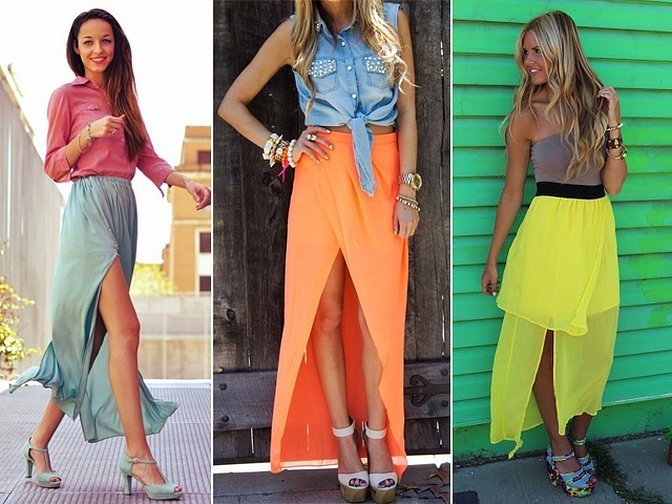
It is believed that such a wardrobe detail suits women with any type of figure at any age. The choice is made in accordance with the event, season. The type of fabric and color, as well as the trim are taken into account.
Taking measurements
To construct the correct skirt pattern, you need to take several basic measurements. Usually, all the necessary parameters of the figure can be determined using this scheme:
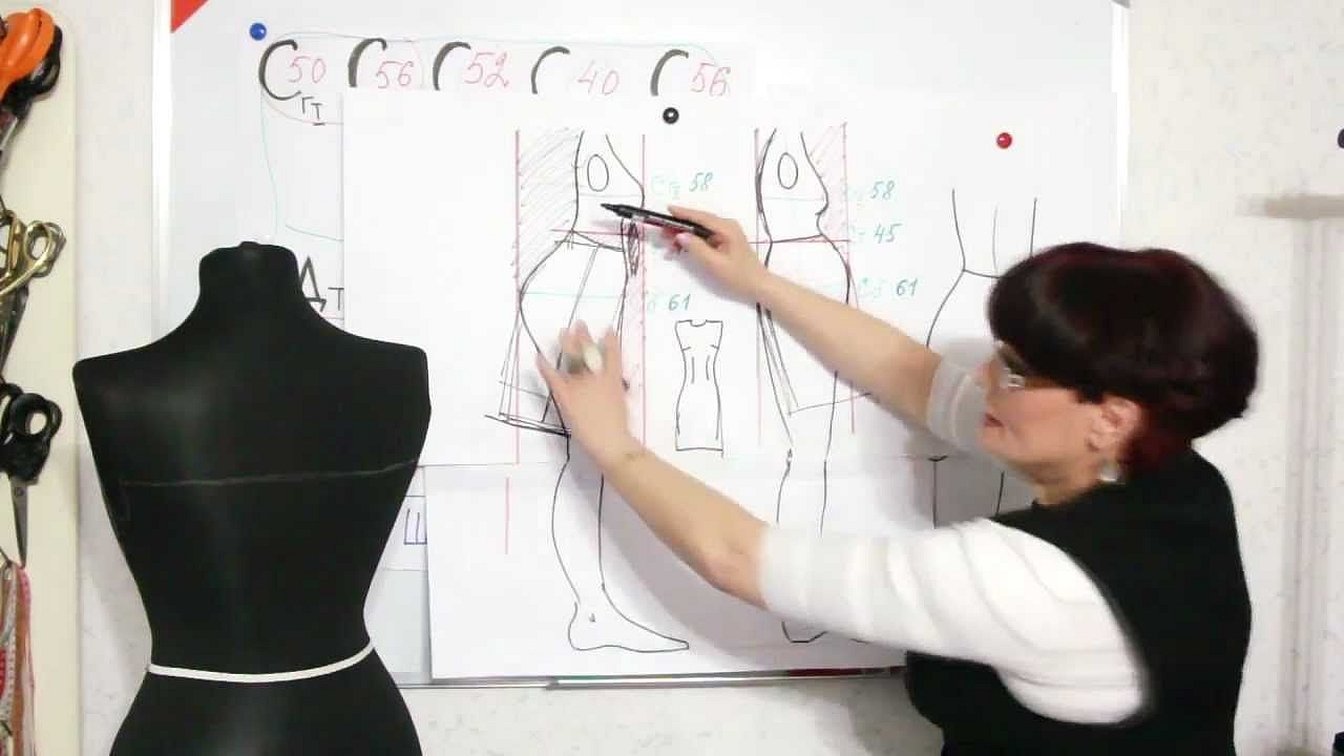
To be sure not to make a mistake with the algorithm for taking measurements, it is worth additionally using the instruction appendix:
- Take measurements in full, without additional divisions.
- Measure the length of the finished product from the waist line to the desired skirt length.
- Waist circumference is measured around the narrowest part of the torso.
- Hip circumference is determined by the most convex part of the buttocks.
Please note! When determining the length, it is worth adding a few cm for the allowance and turning of the lower/upper seam.
The next step is to divide the measurements taken from the waist and hips by two. This will give you the half-girth.
When all the measurements are taken and compared, you can proceed to constructing the drawing itself. To begin this stage of work, you need to prepare graph paper (Whatman paper), a pencil, a ruler, and an eraser.
If you take high-quality measurements and write down the data you receive, then the instructions for obtaining the correct figure parameters will not be complicated or unclear.
Calculation of the amount of fabric
A pattern for a long skirt is impossible without a correct calculation of the amount of fabric for sewing. If there is not enough textile to make a specific item, then it may not be possible to buy exactly the same fabric in a given color. A lot of leftovers also hit the pocket.

To accurately determine the amount of fabric, you need to take into account the following nuances:
- Decide on the style of the skirt.
- Take into account the parameters of the figure.
- Select the finishing principle and all possible inserts/overlays.
You need to add another 2-3 cm to the parameters you get, which will be used for finishing and turning up the seams. You also need to take into account the shrinkage of the fabric. There is a special instruction according to which textiles are checked.
Construction of the pattern
A floor-length skirt, the pattern of which is initially constructed incorrectly, may turn out to be disproportionate and not fit the figure well. Each style has its own characteristics in terms of silhouette and hem shape. There is a master class for each option.
Skirt with elastic band
A skirt with an elastic band is the easiest option to make. Any material can be used here. Products made of tulle and natural silk look especially impressive. The pattern can have any hem silhouette, the most popular options are considered to be a trapezoid, half-sun and sun.
First you need to prepare a pattern. You can use this sketch:
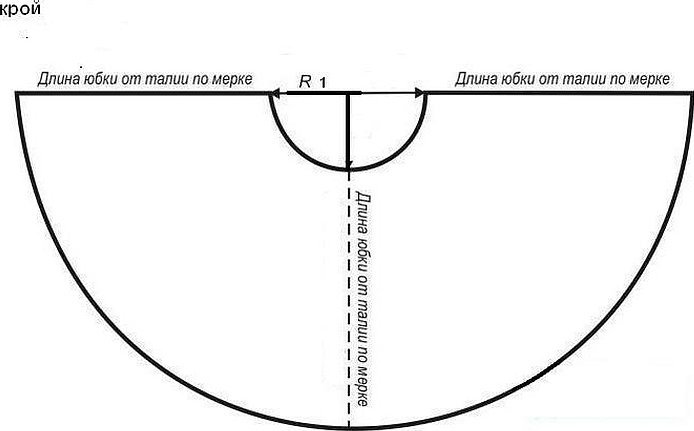
All parameters and sizes of the figure are transferred here. Then a paper model of the product is made on Whatman paper and brought to the fabric. This is approximately what it looks like:
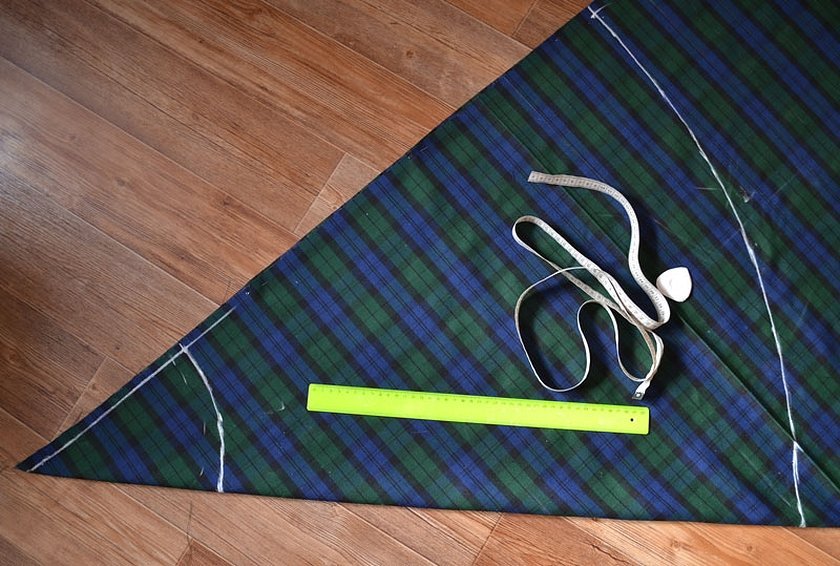
Additionally, a yoke is made from the same fabric, which will later cover the elastic. After preparing the pattern, you need to process the edges with an overlock. You need to fold the edges at the top and bottom by 1 cm and overcast. Then sew the yoke folded in half on top. Pull the elastic into the sewn yoke with a pin. The finished product looks like this:
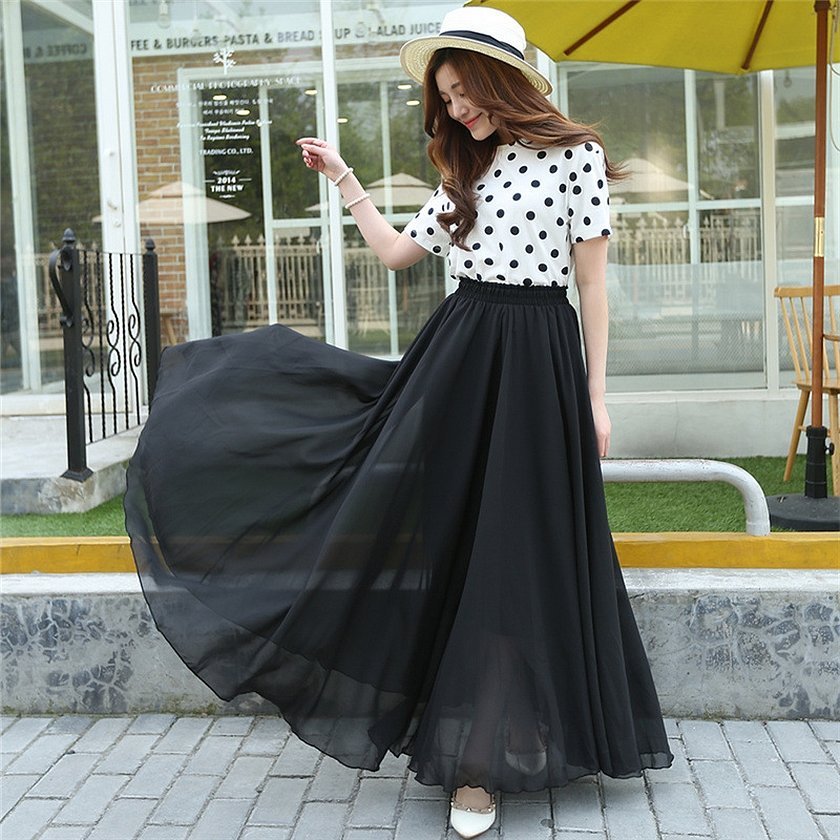
You can see such models on the beach, in the park or simply on girls walking around the city in the evening.
Skirt with pleats
The folded version can have a variety of uses - it can become the highlight of a summer look, the basis of a business outfit. In each case, a different type of fabric is used - chiffon is ideal in the first case, and gabardine in the second.
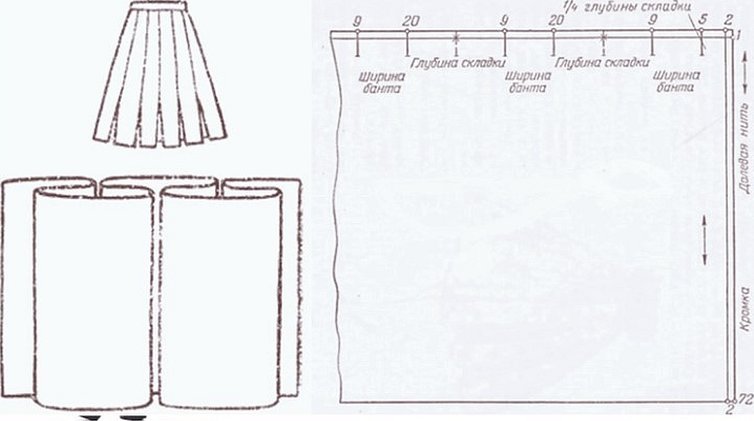
There is an option to create a pleated skirt without the need to create a special drawing. The folds should be marked directly on the face of the fabric with chalk or a piece of soap. And fold them there. To calculate the width of the required material, you need to multiply the waist size by three, add 4 cm for free fit + 15 cm for adjustment to the figure and add allowances for seams.
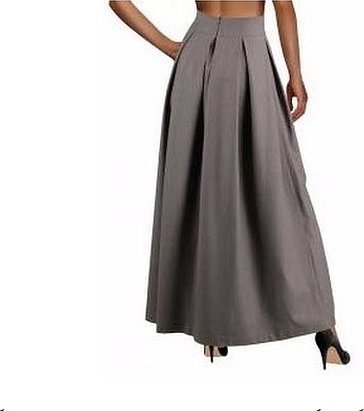
Important! The product must be cut strictly along the warp thread, otherwise it may become distorted during the sewing process.
Next, you need to sew a strip of fabric with folds marked on it to the yoke, which is equal in length to the waist circumference.
Wrap skirt
A long summer skirt, the pattern of which will be "within the teeth" of even a beginner needlewoman, is a wrap-around version. Usually the item is fixed at the waist with ties, but you can make a pseudo-wrap - an elastic band will be used as a fastener.
To sew a light and practical wrap skirt with an elastic band, you should use the following pattern:
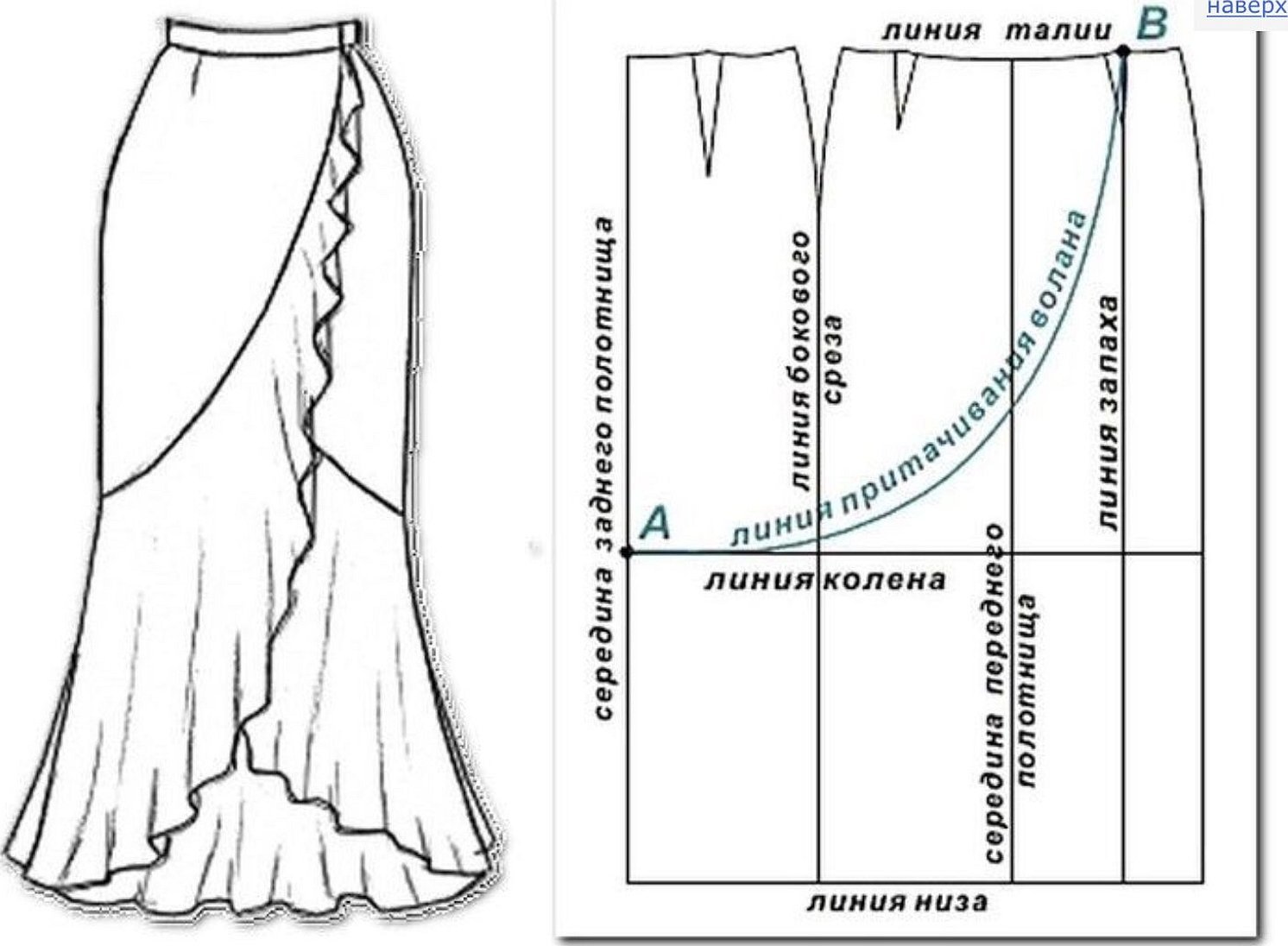
This version of the item will be a great addition to the wardrobe of the fashionista who loves simplicity and lightness in her looks. You can make another version of the item with more complex cut and processing options.
Sewing features
A novice or self-taught seamstress who has not yet gained the knack of sewing can make a lot of mistakes. To understand how to sew a full-length skirt without mistakes, you need to know a few nuances:
- Models made of transparent fabric should always be equipped with a lining. It can be made of the main fabric or other thin and light fabrics. The pattern of the skirt itself or an A-line skirt is suitable for the lining.
- If there are folds on the front panel of the skirt, then they must be folded into the lining as well. The lining must be joined to the skirt along the upper edges, and then the belt must be sewn on. The inner edge of the belt must be finished with bias tape made from the lining fabric.
- If there is not enough fabric for the desired length, you need to sew a thin fabric of a suitable color to the bottom edge of the skirt. Turn back the sewn hem so that the main fabric goes 1 mm to the wrong side of the skirt and iron the piece well. Then hem it manually with a blind stitch, or topstitch the bottom along the edge of the hem.
- To be sure not to make a mistake with the length of the hem, it is worth measuring the length from the waistline in front and back several times. It is worth immediately understanding what kind of shoes the item will be worn with. The length feature largely depends on this.
- In models with a yoke, the yoke itself performs the function of darts. To maintain the shape in the waist area, you need to duplicate two parts of the yoke with collar calico (adhesive for collars and corsets). Or try using regilin. Stitch it onto the seam allowances of the yoke. Or make drawstrings from the allowances and insert strips of regilin into them.

There are other secrets that concern sewing and processing of parts and pieces of the item, but they mainly concern the fabric chosen for production. Some features concern the use of unique fittings and expensive finishing.
Sewing a long skirt is usually not accompanied by problems, especially if it is a summer option. There are very simple patterns that can be made knowing only the parameters of the figure. Thanks to the simplest techniques and methods, you can easily process the fabric cuts and connect the parts of the product.




